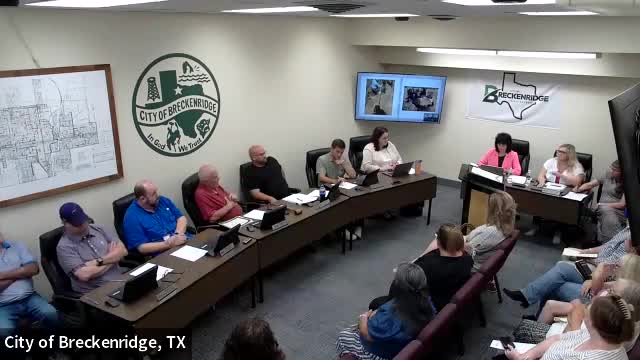City faces aging infrastructure crisis as water lines deteriorate
August 12, 2024 | Breckenridge, Stephens County, Texas
This article was created by AI summarizing key points discussed. AI makes mistakes, so for full details and context, please refer to the video of the full meeting. Please report any errors so we can fix them. Report an error »

In a recent government meeting, officials addressed the ongoing challenges facing the local water and sewer infrastructure, highlighting a significant disparity between the system's capacity and the current population it serves. The community is grappling with 80 miles of water lines, 45 miles of gravity sewer lines, and 66 miles of road, much of which has not been adequately maintained for decades.
The population served by this aging infrastructure has drastically declined from an estimated 30,000 in the mid-20th century to approximately 6,200 today. This reduction has resulted in a substantial decrease in revenue, complicating efforts to maintain and upgrade the system. Officials noted that the existing lines, many dating back to the 1930s and 1940s, are not only outdated but also insufficient for the current needs of the community.
Efforts to address these issues include a planned investment of nearly $7 million through the Texas Water Development Board. However, officials acknowledged that this funding is only a fraction of what is needed to fully modernize the system. They emphasized the importance of ongoing work to ensure reliable water service, despite the challenges posed by the aging infrastructure.
The meeting underscored the critical need for a comprehensive approach to infrastructure management, as officials continue to navigate the complexities of serving a significantly smaller population with a system designed for a much larger one.
The population served by this aging infrastructure has drastically declined from an estimated 30,000 in the mid-20th century to approximately 6,200 today. This reduction has resulted in a substantial decrease in revenue, complicating efforts to maintain and upgrade the system. Officials noted that the existing lines, many dating back to the 1930s and 1940s, are not only outdated but also insufficient for the current needs of the community.
Efforts to address these issues include a planned investment of nearly $7 million through the Texas Water Development Board. However, officials acknowledged that this funding is only a fraction of what is needed to fully modernize the system. They emphasized the importance of ongoing work to ensure reliable water service, despite the challenges posed by the aging infrastructure.
The meeting underscored the critical need for a comprehensive approach to infrastructure management, as officials continue to navigate the complexities of serving a significantly smaller population with a system designed for a much larger one.
View full meeting
This article is based on a recent meeting—watch the full video and explore the complete transcript for deeper insights into the discussion.
View full meeting
